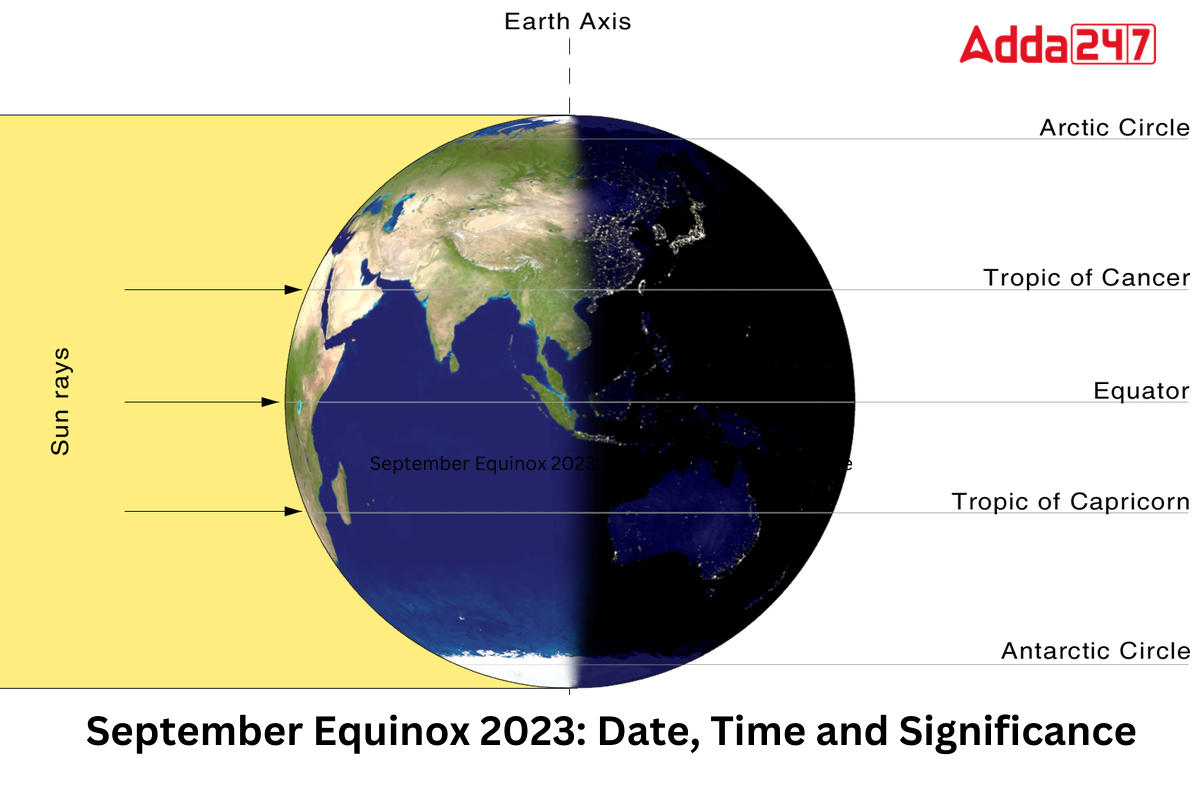September Equinox 2023
On Saturday, 23rd September 2023, at 12:20 IST (06:50 UTC), people around the world witnessed an astronomical event known as the September Equinox. September Equinox is also known as Fall Equinox. This significant event marks the transition from summer to fall in the Northern Hemisphere and from winter to spring in the Southern Hemisphere.
What is September Equinox?
The September Equinox occurs in September every year when day and night are nearly equal in length worldwide. It marks the start of autumn in the Northern Hemisphere and spring in the Southern Hemisphere. This astronomical event is caused by Earth’s tilt.
Titled Earth’s Role
This north-south movement of the subsolar point occurs because Earth’s axis is titled at an angle of approximately 23.4 degrees concerning the ecliptic plane, an imaginary plane defined by Earth’s orbit around the Sun. This title is the reason for the changing seasons.
What is Equinox?
On the days of the equinoxes (March and September), Earth’s axis aligns perpendicular to the Sun’s rays, causing all regions on Earth to receive roughly the same amount of sunlight. This alignment results in nearly equal lengths of day and night everywhere, hence the name “equinox,” derived from the Latin words “aequus” (equal) and “nox” (night).
Equilix: While the equinoxes are often thought of as having exactly 12 hours of daylight and 12 hours of darkness, this is not entirely accurate. The equinox, a term used in astronomy, refers to the days when day and night are actually of equal length. The equilux typically occurs a few days before or after the equinox due to factors like atmospheric refraction.
Seasons and Equinoxes
The September Equinox marks the beginning of fall in the Northern Hemisphere and the start of spring in the Southern Hemisphere. Seasons are a result of Earth’s axial tilt combined with its orbit around the Sun. During fall, the Northern Hemisphere tilts away from the Sun, leading to cooler temperature and shorter days. In contrast, the Southern Hemisphere tilts toward the Sun during this time, ushering in warmer weather and longer daylight hours.
The Date’s Variability
The date of equinoxes fluctuates because our calendar’s length does not precisely match Earth’s tropical year. To compensate for this discrepancy, a leap day is added to the calendar every four years. This adjustment ensures that equinoxes and solstices stay reasonably synchronized with our calendar over time.



 Indian Olympic Medal Winners List Till N...
Indian Olympic Medal Winners List Till N...
 Who is the Inventor of the Gramophone?
Who is the Inventor of the Gramophone?
 HS Dhaliwal Appointed New DGP Of Andaman...
HS Dhaliwal Appointed New DGP Of Andaman...
